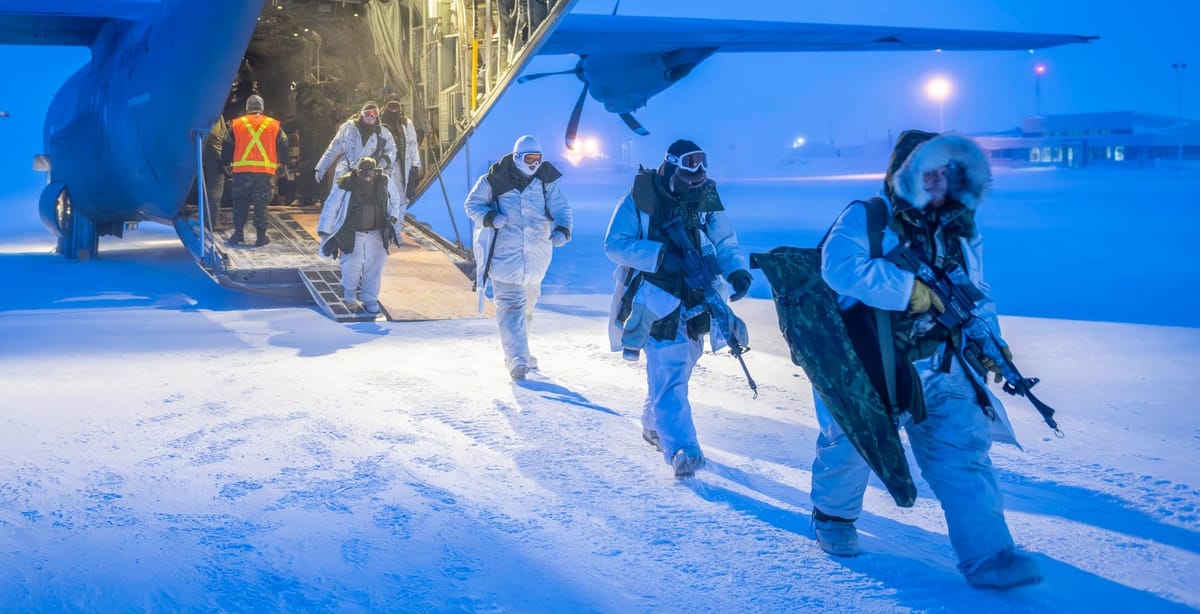Canada's defence priorities shift towards Arctic security
The Canadian federal government is making significant investments in Arctic security as the country’s security priorities shift towards the region.

The Canadian federal government’s newly released defence policy and the 2024 budget highlight the country’s security priorities shifting towards the Arctic.
Language within both documents clearly depicts the government change in attitude and approach towards Canada's northern territories as the importance of the Arctic continues to grow.
The government highlights the importance of protecting the country's sovereignty and the need to increase military capabilities to be able to not only patrol the Arctic, but to be able to respond to potential threats. While Arctic security was noted in the governments 2017 defence policy Strong, Secure, Engaged, it has taken centre stage.
Perhaps most notably, Russia and China are noted as the main potential threats to Canada's sovereignty. The document highlights that the two countries are challenging the international order and destabilizing their regions. While Canada may seem far removed from these nations, the greatest concern comes from the short travel time that ICBMs would have travelling over the Arctic Circle, which is highly vulnerable due to a lack of surveillance and detection capabilities.
As such Canada’s defence policy, titled Our North, Strong and Free allocates an additional $8.1 billion CAD (about $5.9 billion USD) over the next five years beginning in the 2024-25 fiscal year towards improving the country’s national security and military capabilities.
With this funding Canada's military spending budget is estimated to rise to 1.72% of its total GDP by 2030. Although missing NATO's 2% mark, it is a significant increase from where it was last year at 1.29%.
The $8.1 billion will be used to replenish Canada's munitions stockpiles, procure new equipment and to develop Arctic infrastructure.
Some of the more notable funding commitments included in Budget 2024:
- $1.9 billion to extend the life of Halifax-class frigates;
- $1.8 billion to build a strategic reserve of ammunition and scale up domestic production of artillery munitions;
- $1.4 billion to replenish military equipment;
- $941 million to create new and to improve existing military infrastructure; and
- $549 million to invest in purchasing new satellite communication systems and other military equipment.
In addition to the investments announced in the 2024 federal budget, the federal government has made significant investments in Arctic security over the past two years. These include:
- $10.4 billion for the purchase of 16 new P-8A Poseidon Multi-Purpose Aircraft;
- $3.6 billion to acquire nine CC-330 Husky mid-flight refuelling aircraft;
- $2.5 billion towards procuring 11 armed MQ-9B SkyGuardian drones;
- $6.9 billion to modernize the surveillance systems including the purchase of Arctic Over-the-Horizon Radar systems;
- $6.4 billion for the purchase of modern air-to-air weapons systems for Canadian fighter aircraft; and
- $15.7 billion in Arctic infrastructure capable of housing the CC-330 aircraft and the Canadian F-35 fighter fleet.
Much of these investments reflect the main challenges that were outlined in a report titled "Arctic Security Under Threat." The document, which was published June 2023, is the result of an extensive study undertaken by the Canadian Senate's national security committee.
The report outlined the increasing importance of the region as it continues to become increasingly accessible and other nations' make their Arctic ambitions evermore evident. It notes Russia's hostility to the West and its increasingly closer ties to China, which create an urgent need for Canada to bolster its Arctic military presence. Specifically, the reports highlights Canada's main issues as a lack of manpower, surveillance, and infrastructure.
Besides increasing its military spending budget, the Canadian government, along side its allies, has increased Arctic training. The Canadian Armed Forces have partaken in multiple training operations in the Canadian North, Alaska, and within Northern regions of its NATO allies.
These training operations are conducted with the idea that the NATO allies will be facing Russian forces, which itself has been increasing its Arctic presence and preparing for a potential confrontation.
While Canada is far from ready to face potential threats in the Arctic, these investments show that the government recognizes that the geopolitical significance of the region and is taking necessary steps to address existing challenges and shortcomings.

